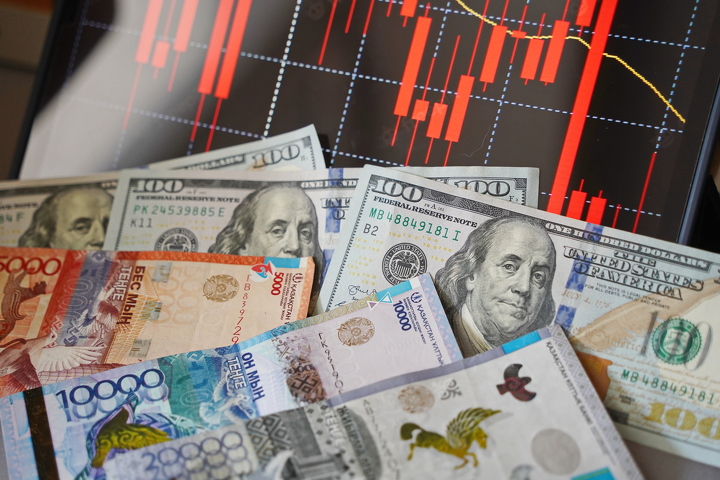ASTANA – Sales of foreign currency from the National Fund reached $660 million in October, with the transactions accounting for 11% of overall market activity, or roughly $30 million in daily trading, the National Bank of Kazakhstan said in its monthly update.

Photo credit: Depositphotos.com
The sales helped cover transfers to the state budget and finance the construction of the Taldykorgan–Usharal main gas pipeline.
According to the National Bank, the tenge strengthened by 3.5% over the month, reaching 529.96 per U.S. dollar, compared to 549.07 at the end of September. The average trading volume on the Kazakhstan Stock Exchange reached $6 billion in October.
As part of the mirroring mechanism, 475 billion tenge (US$908.8 million) were sterilized in October, helping prevent excess liquidity from pressuring the exchange rate.
According to the Halyk Finance research center, the strengthening of the tenge was likely driven by increased foreign-currency supply stemming from borrowings by the government, quasi-state entities, and the private sector.
“In addition, as previously announced, the National Bank sharply raised the volume of foreign-currency sales under its mirroring practice starting in October, providing further support to the exchange rate,” writes Saltanat Igenbekova, the center’s analyst.
“The steep base-rate hike that month may also have drawn additional foreign portfolio investment into government securities, adding to the overall supply of foreign currency on the market,” she added.
She also noted that the National Bank continued its policy of purchasing gold on the domestic market in October to absorb liquidity in the economy.
“Under the current plan, the regulator expects to sell the equivalent of 1.4 trillion tenge [US$2.7 billion] in foreign currency during the fourth quarter. In October, it bought 475 billion tenge worth of gold, or around $880 million at the average monthly exchange rate of 539.92. In September, sterilization amounted to 290 billion tenge, or $536 million, at an average rate of 540.74,” she writes.
According to the National Bank, foreign currency sales are expected to be between $600 million and $700 million in November. Igenbekova links the increase in sales to the National Fund’s issuance of bond loans to Samruk Kazyna for infrastructure projects.
However, she also stressed the need for greater transparency surrounding decisions to allocate such bond financing from the National Fund.
“Lack of transparency in borrowing plans adds uncertainty to the exchange-rate outlook. In the short term, selling foreign currency from the fund to provide loans in tenge will support the tenge. But as these projects advance, the resulting rise in imports is likely to put downward pressure on the currency,” Igenbekova explained.
Overall, she noted that current indicators suggest no major shifts that would significantly alter the tenge’s trajectory.
“We expect oil prices to remain relatively low in the near term, with crude export volumes only slightly above last year’s levels, a combination that will tend to weigh on the currency. High inflation will also continue to erode the tenge’s purchasing power,” Igenbekova wrote.
Inflation hit 12.6% in October, according to the latest figures.
“We therefore maintain our year-end forecast at 550–560 per U.S. dollar. However, should the government or quasi-state entities undertake substantial additional foreign-currency borrowing before year’s end, the exchange rate could settle below this range,” she added.





